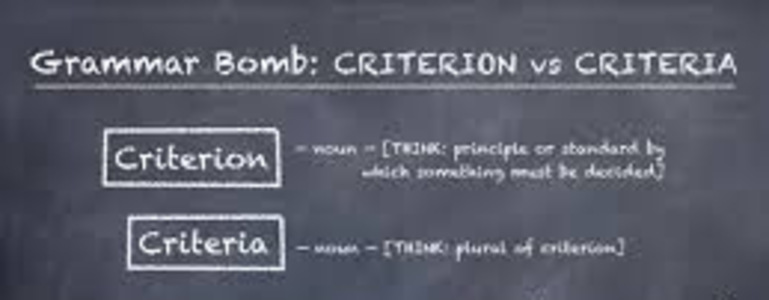

The Criterion of Criteria
How to Understand Liberal Decision Making
CAVE, MO – Being somewhat conservative, I always understood how conservatives made decisions, we analyze the problem and then apply a logical solution! Until recently however, I never understood how liberals made decisions. However, I have since studied them (both the liberals and their decisions) and have discovered how they (the liberals, not the decisions) do it.
I found that liberals use two completely different criteria to evaluate and solve a problem; they use one criterion to evaluate and solve a problem involving a liberal person or policy and a second, different criterion to evaluate and solve a problem involving a conservative person or policy.
Here are the two criteria used by liberals:
1. When evaluating something liberal, they use the “Intent” criterion. But,
2. When evaluating something conservative, they use the “Perfection” criterion.
After I discerned the different criteria used by liberals, their decision making made sense to me, sort of.
Here is how each of the two criteria are applied:
A decision made using the “Intent” criterion is based solely on the intent of the person or policy in question. Everything must “feel right”. As long as everything “feels right”, the actions that have to be taken as well as the ensuing results are completely understandable and justified.
On the other hand, when a decision is made using “Perfection” criterion, “feeling right” goes right out the window. The “Perfection” criterion requires the person or policy in question to be perfect. If the person or policy has any flaws, no matter how insignificant, the baby is thrown out with the bathwater. The person or policy is deemed wrong, selfish, self-serving, racist, sexist, homophobic, Islamophobic, yada, yada, yada and is never to be considered or spoken of again (except as the object of ridicule). In addition, anyone connected to that person or policy must be cancelled, destroyed, and, if a white male, subject to the Triple-C (don’t ask, its disgusting).
Here are a few examples of the application of the “Intent” criterion in action.
Example #1 – The Bill Clinton/Monica Lewinsky relationship. While conservatives thought that hurling seminal fluid around the oval office and lying under oath about it afterward was not entirely kosher, liberals didn’t think that way. They felt (notice I said felt, not thought) that since Bill Clinton always “always intended” to do good things, the messy (but dry-cleanable) actions and Clinton’s subsequent perjury were understandable and justified.
Example #2 – Environmentalist Al Gore. Since Gore “always intends” to do wonderful things, everything he proposes or does must be applauded. The inconvenient facts that his house uses as much energy as four or five “normal” houses and he always flies on luxury private planes are completely justified. (Interesting Fact: A Gulfstream 5 with 5 passengers aboard uses 395.87 times (I.e., 39,587%) the fuel per passenger mile when compared to a fully laden 737 (3.85 gallons per passenger mile vs .0097 gallons per passenger mile. In addition, the coffee makers on commercial airliners also use far less energy than the espresso/cafe-au-lait makers on Gulfstreams.)
Of course, conservative people, policies, or ideas are not judged on the “Intent” criterion. They are, instead, judged by the “Perfection” criterion. Here are some examples of how conservative people and policies have been evaluated in this way:
Examples #1- ∞ – Trump, Kavanaugh, Christian bakers, capitalism, Israel, Iran, Iraq, Russia, China, tax cuts, The Second Amendment, Republicans, impeachment, white people, Mitt Romney, Original Intent, abortion, et cetera, et cetera, et cetera. . . . Clearly all are flawed and must be condemned and cancelled.
I.e., feel good and comfortable, not conservative.
King Mongkut of Siam, The King and I, portrayed by Yul Brenner
masteradmin
LOOKING FOR SOMETHING?
MAKE A DONATION TO KEEP POLITICAL SATIRE ALIVE
No Donation Too Small . . .
No Donation Too Big.



